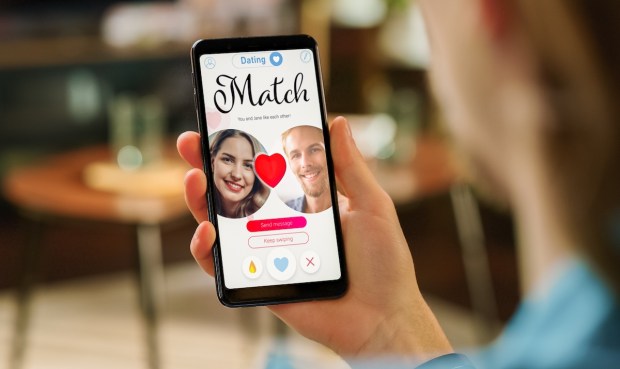
With consumers following up on their New Year’s resolutions to get out there, dating apps are looking to seize on the start-of-year boom to drive adoption of their paid offerings.
Sunday (Jan. 7) was Dating Sunday, the first Sunday of the year, so named by dating apps because it is a day when these platforms have historically seen the highest engagement.
Tinder sees consumers sending 22% more messages than average on Dating Sunday, and they reply 19.4 minutes faster than a typical Sunday, with Likes sent increasing by 58.7 million, Fox reported. Coffee Meets Bagel has historically seen a 47% bump in traffic on Dating Sunday.
Additionally, KOTA reported that OkCupid sees a 70% increase in activity on Dating Sunday.
Tinder, for its part, the most popular dating app, stepped up its advertising in advance of the event, according to Marketing Dive. It seems the dating app also planned to use the day to drive subscriptions to its most lucrative offering, Tinder Select. Weeks before the high-traffic day, in late December, the app expanded access to its $499 per month membership.
Yet as dating apps step up their monetization offerings, many consumers have grown frustrated. In the past month alone, headlines have included CNBC’s “People are spending hundreds a month on dating apps as free versions turn ‘borderline unusable,’” Bustle’s “Dating Apps Are In Their Flop Era” and Vox’s article dubbed “Why Does Everyone Hate Hinge?” for short.
All these stories showcase consumers’ growing frustrations with their dating app experiences, with the increasing monetization of these apps exacerbating the dissatisfaction (such as Hinge’s so-called “rose jail,” which makes it difficult for consumers to match with the most popular users for free).
Additionally, as PYMNTS reported in December, Google Trends analyses showed searches for “speed dating” trending positively over the past two years, as well as searches for “dating events” and “where to meet people,” suggesting that consumers are increasingly looking for alternatives to dating apps.
Both Match Group and Bumble’s stocks have fallen double-digits in the last year, although the former has seen its stock rise in the past month, alongside this uptick in consumer engagement.
So far, only a small share of dating app users is willing to pay to engage. According to findings from “The Love and Social Media Edition” of PYMNTS Intelligence’s ConnectedEconomy™ Monthly Report series, 28% of consumers engaged with digital dating platforms as of March. That share jumped to 57% for Generation Z and 48% for millennials. Tinder, Bumble and Hinge proved to be the most popular platforms, respectively. Among these dating app users, 15% pay for subscriptions.
Match Group, for its part, continues to tout the shift to subscription models as a positive for the business, seeing success with the addition of weekly plans as opposed to limiting consumers to higher-commitment monthly options.
“Not only are the weekly subscribers helpful from a revenue accretion standpoint and [a revenue per paid user] standpoint, but … they are positive on [a lifetime value] basis,” Match Group President and Chief Financial Officer Gary Swidler told analysts on the company’s most recent earnings call. “We’ve been monitoring the renewal rates and the resubscription rates of these subscribers, and that’s been meeting or even exceeding our expectations.”